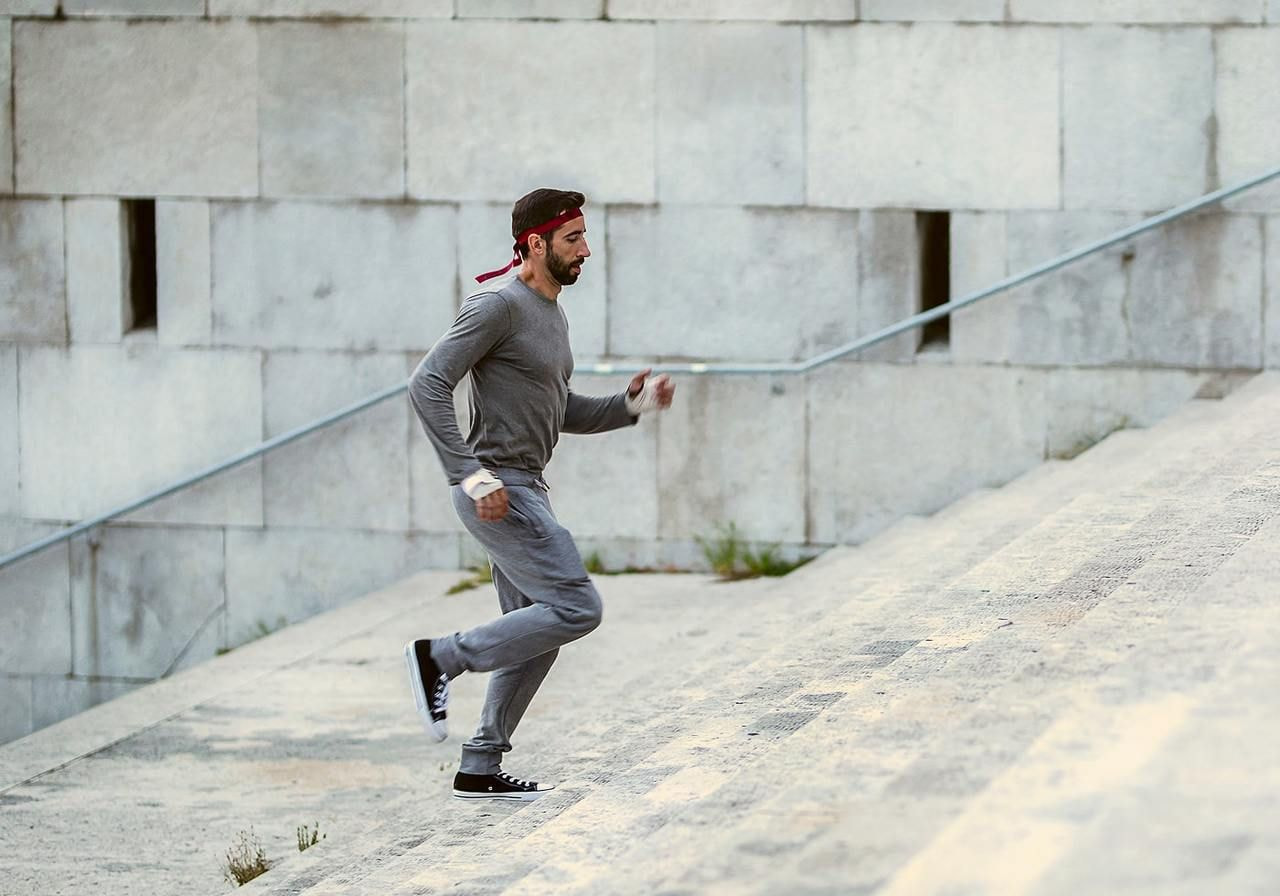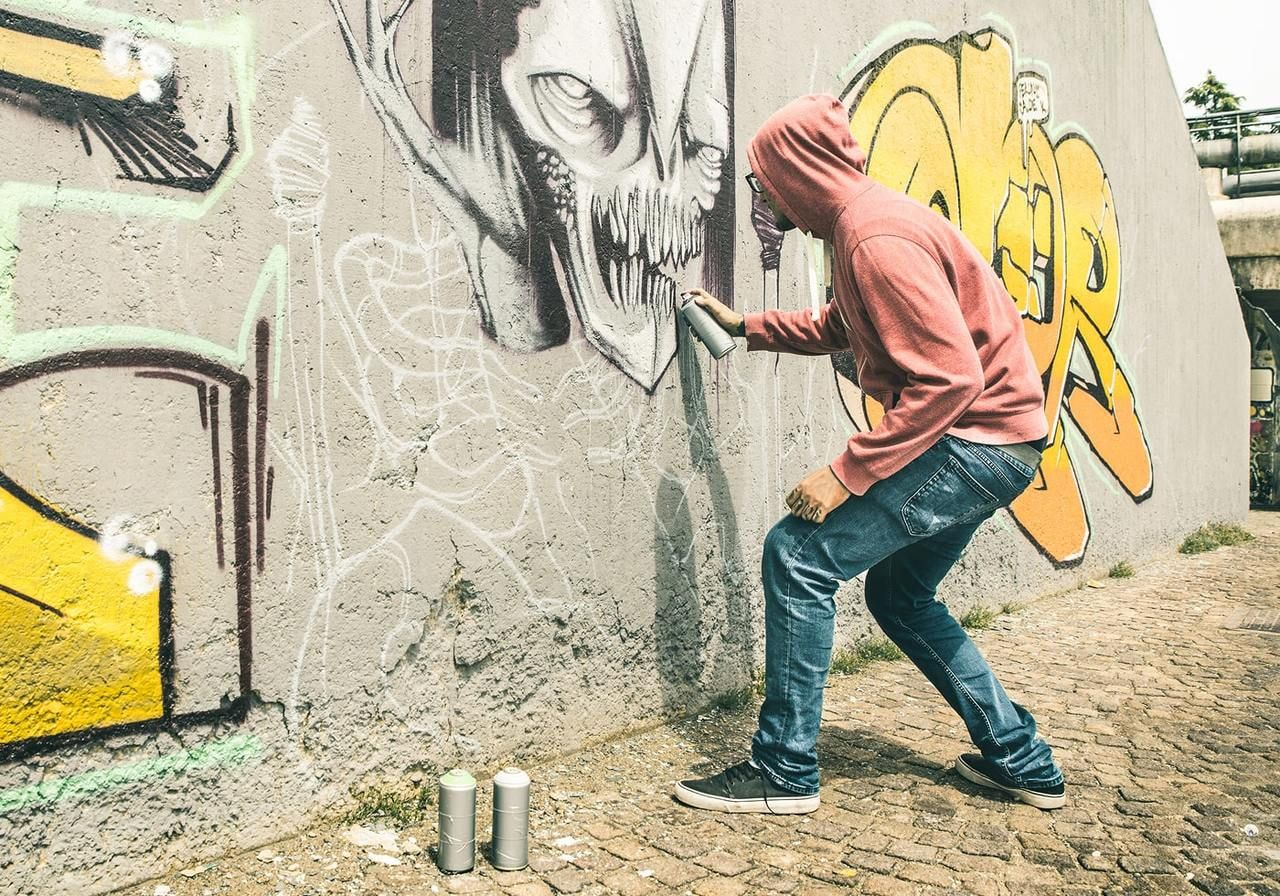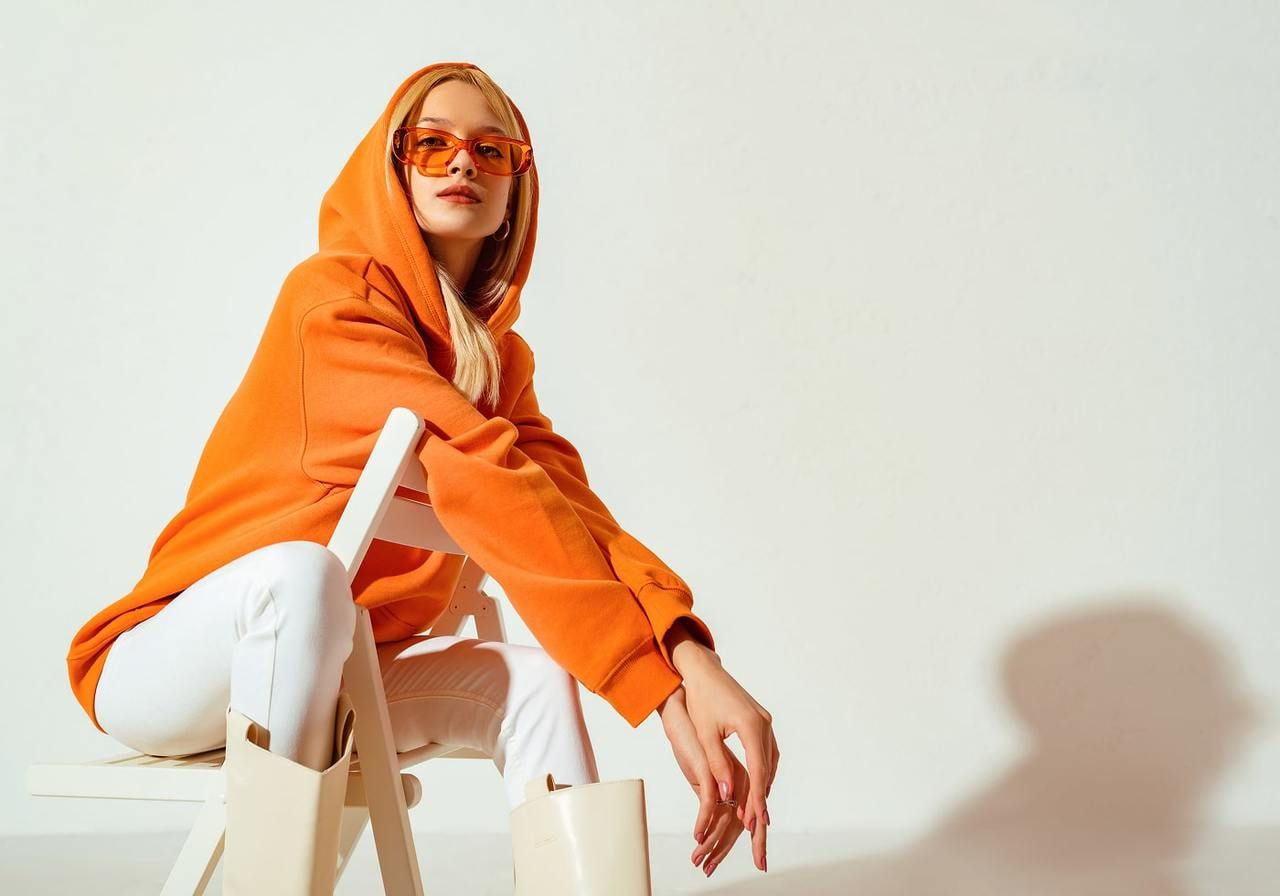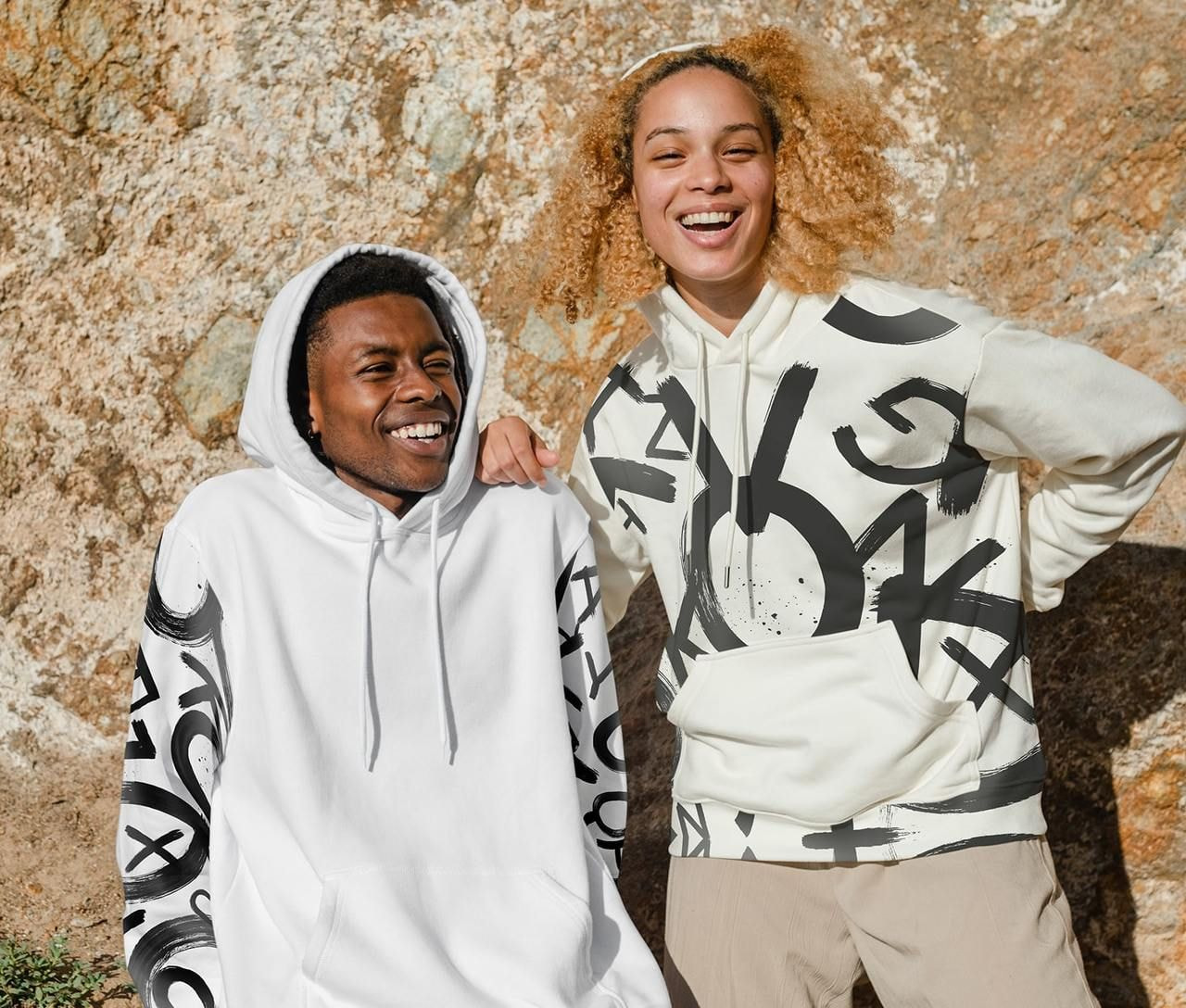Table of contents
Even though it’s still a relatively new type of garment, few items of clothing have such a fascinating history as the hoodie.
For much of its history, the hoodie has adopted to fit different lifestyles. Embraced by athletes and endorsed by music artists, there’s more to it than just the trending hoodies that dominate the fashion scene.
In this blog post, we’ll trace the hoodie’s evolution from a practical garment to a cultural symbol. Let’s dive in!
Origins of hooded garments
The history of the hood can be traced back to the 13th century BC, from the earliest known Assyrian text. Over 3,000 years ago, traditions of covering the head with a hood already existed in several religions of the time. Eventually, these cultural expressions spread from the Persian Gulf to Medieval Europe.
In the English language, the word “hood” derives from the Anglo-Saxon word “höd,” which has the same root as the word “hat.” In Medieval Europe, hoods, known as cowls, were popular among religious orders and worn by Catholic monks.
The 1930s: Invention of the hooded sweatshirt
The history of the hoodie as we know it goes back to the 1930s, when Champion Products, which started as the Knickerbocker Knitting Company, designed the first hooded sweatshirt. Originally an undergarment mill, the manufacturer produced its first sweatshirt back in 1919 and kept experimenting with thicker materials and sewing techniques.
One of the major innovations was the development of a heavy-duty cotton fleece called “Reverse Weave.” It minimized vertical shrinkage by being cut on the cross grain and addressed the shrinkage problems caused by laundry machines.
On top of that, smaller independent manufacturers took the existing crew neck sweatshirt design and modified it by sewing a double-layer hood around the neckline. Some also added a large center pocket to the front.
These new design additions were in response to the needs of outdoor and warehouse workers in the cold climate of New York. The added hoods protected laborers from the harsh weather conditions. Plus, the large center pocket was a useful hand warmer. Naturally, workers in breezy cold-storage warehouses welcomed this warmer alternative to their long underwear.
The benefits of hooded sweatshirts were also recognized by athletes and sports teams. In 1934, the University of Michigan invited Champion Products to create the first hooded sweatshirt for their sports team.
This resulted in the big, double-thick hooded sweatshirts that football players and track athletes wore on the sidelines in bad weather. They were designed with dropped shoulder seams so football players could wear them over shoulder pads. The garments became known as “side-line sweatshirts.”
The 1960s: Hoodies worn by top athletes
By the end of the 1960s, the hoodie had become a popular piece of sportswear. It offered comfort, warmth, and flexibility to suit different activities from running track to the soccer field.
During this time, the hoodie was well-known within a closed circle of college campuses and gyms. But, things were starting to change, and world-class athletes were also starting to embrace the hooded sweatshirt. In 1966, World Heavyweight Champion Muhammad Ali was photographed walking the streets of London in a white hoodie, taking the look across the Atlantic.
The 1970s: A gray hoodie earns the Hollywood stamp of approval
A culturally significant moment came with the 1976 release of the “Rocky” movie. The now-classic film tells the story of how a kind-hearted amateur boxer, Rocky Balboa (played by Sylvester Stallone), gets a shot at the world heavyweight championship. Rocky came to embody the underdog, and his bare-bones workout gear reflected his origins.
A classic gray hoodie makes its appearance in an iconic training montage that shows Rocky’s determination to win the fight. In it, the hoodie is worn by someone who decides to stand up, work hard, and persevere against all odds—and the hoodie is front and center.

Coming off the success of the Rocky movie, hoodies were truly gaining momentum. In the late 1970s, New York City was a hub for emerging hip-hop culture with graffiti artists, dancers, and DJs on the scene.
Hoodies were a popular choice for graffiti artists looking for anonymity. Alongside its utilitarian function, the hoodie quickly became associated with counterculture. 
The 1980s: The rise of street fashion
During the 1980s, subcultures like hip-hop and skateboarding rose to the mainstream. Emerging from the Bronx, hip-hop culture carried an anti-establishment attitude, and the rugged working-class heritage of the hoodie fit well with groups like Run-DMC and Public Enemy.

In addition, skateboarding found its way outside the beaming heat of California and into colder climates. Skateboarders quickly turned to baggy cotton hoodies for comfort and style.
Lending itself to loose fits, skateboarding encouraged people to define themselves through their clothing and a rebellious attitude. Fashion was central to this ethos and the hoodie became an integral part of the skater lifestyle.

The 1990s: From the streets to fashion runways
In the 1990s, rap groups like Wu-Tang Clan boasted a rough, pared-down street style to go along with their gritty attitude. During this time, hoodies became associated with rap artists who embraced the look as anti-establishment, in stark contrast to business suits and formal attire.
The cover of the classic 1993 album Enter the Wu-Tang (36 Chambers) shows the band in black hoodies and white masks—a look that’s both “a little disrespectful” and electrifying. On top of its associations with street culture, the hoodie was increasingly maligned as an emblem of crime and rebellion, earning negative connotations and harmful stereotypes.
The 90s also saw the hoodie’s rise to fashion runways, with Gucci and Versace adding hooded sweatshirts to their collections. Plus, Tommy Hilfiger’s line of preppy clothes with the trademark red, white, and blue logo became popular in the world of hip-hop fashion. Rappers especially favored oversized versions of their jackets, sweatshirts, and hoodies.
The 2000s: Hoodies enter the mainstream
The hoodie’s presence in music videos, films, and celebrity wardrobes propelled its global influence in the aughts. As hip-hop and pop culture intermingled, the hoodie turned into a cross-cultural symbol of self-expression.
The apparel line Rocawear, created and modeled by Jay-Z, pushed for casual glamor with street style influences. At the same time, celebrities like Paris Hilton were often seen wearing Juicy Couture zip-up hoodies, cementing their place in pop culture.

The 2010s: An unofficial tech uniform
Many have used the hoodie to make a statement over the years, lending to its anti-establishment appeal.
In that line, since the 2010s, hoodies have become a common sight in the world of tech, where work attire norms are more relaxed than in other office settings. Distancing themselves from the world of suits and formal dress codes, tech companies embraced comfort and casual everyday wear.
The hoodie turned into the unofficial tech uniform from the likes of Mark Zuckerberg, who famously shared that gray t-shirts and hoodies were the only items in his wardrobe.

Modern-day hoodie culture
The popularity of the hoodie today comes from the influence of hip-hop on fashion and a societal shift towards more casual dress.
The pandemic years have also boosted the hoodie’s profile, making it everyone’s favorite cozy at-home garment. With remote work becoming the new norm, people are increasingly turning to hoodies to stay comfy and look cool.
Hoodies also provide a blank canvas for personal expression. Individuals and brands alike use it to communicate messages, from activism to pop culture references.
This newfound role of a hoodie is supported by the rise of print-on-demand (POD) technology. POD providers like Printful make it simple to create custom hoodies that show off individual, personalized styles.



What’s next for the hoodie?
It’s safe to say that hooded sweatshirts will continue to hold significance in modern life, as more people embrace comfort in their everyday wear.
Whether it’s to align yourself with a broader cultural movement or rep your unique aesthetic, take inspiration from the past to come up with new hoodie design ideas. If you’re looking for some practical guidance, check out our blog post about the best hoodies for printing to get started.
What’s your favorite moment in the history of the hoodie? Share your thoughts in the comment section below!
Read next: Athleisure vs. Activewear: The Ultimate Sportswear Comparison

Sandra is a freelance writer and educator with a background in art and communication. She holds an MA in Art Museum and Gallery Studies, and in her free time enjoys reading, museum visits, and outdoor adventures.





